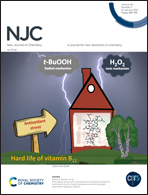The in situ construction of three-dimensional core–shell-structured TiO2@PPy/rGO nanocomposites for improved supercapacitor electrode performance
Abstract
Three-dimensional core–shell-structured TiO2@PPy/rGO nanocomposites were successfully constructed from TiO2@PPy nanospheres and graphene oxide via a polymerization method. First, TiO2 nanoparticles were uniformly coated with polypyrrole (PPy), forming core–shell TiO2@PPy nanospheres. The as-prepared TiO2@PPy nanospheres further self-assembled with graphene oxide (GO), resulting in the formation of three-dimensional ternary TiO2@PPy/rGO nanocomposites. Due to the strong interactions between TiO2@PPy and reduced graphene oxide (rGO), the three-dimensional TiO2@PPy/rGO electrode exhibited larger specific capacitance, lower charge transfer resistance, and more stable cycling performance compared to the TiO2@PPy nanospheres. More importantly, the existence of rGO increased the cycling stability of PPy and improved the capacitive performance, thus further demonstrating the positive effects of rGO, achieving a highest specific capacitance of 462.1 F g−1 at a current density of 0.5 A g−1. The present strategy will pave the way for the development of a new generation of advanced electrode materials for energy storage.



 Please wait while we load your content...
Please wait while we load your content...